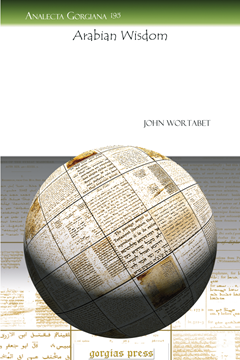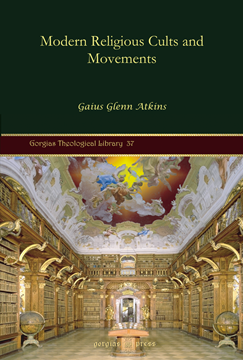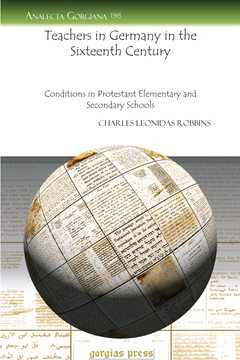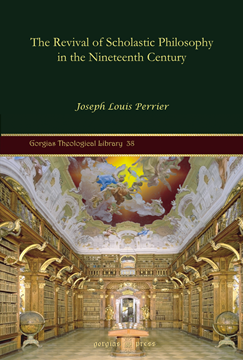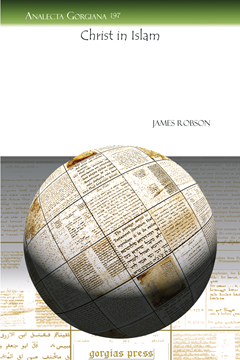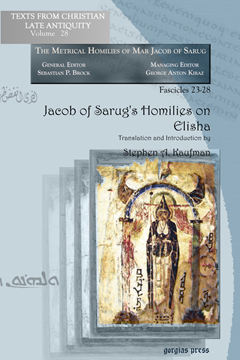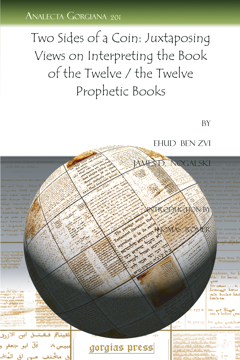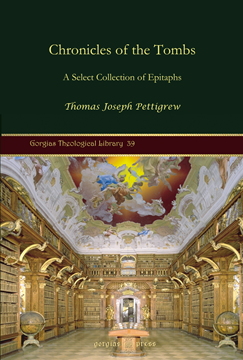Arabian Wisdom
Series: Analecta Gorgiana 195
ISBN: 978-1-60724-295-6
Having lived for many years in Beirut, John Wortabet grew to know much about the Islamic world. Recognizing the wisdom and integrity of the people and religion of what was then known as Syria, Wortabet set about to preserve the essentials of Arabic wisdom in this little book. The wisdom saying, a literary form of ancient pedigree in this part of the world, is generally a brief but pointed statement of a truth distilled from careful observation. Wortabet here presents these saying arranged according to topic, with the goal of facilitating understanding between the wider world and those who live in what has become a very unsettled region.
$47.00 (USD) $28.20 (USD)
Modern Religious Cults and Movements
Series: Kiraz Theological Archive 37
ISBN: 978-1-60724-296-3
A modern classic, Modern Religious Cults and Movements has continued to garner citations even after further investigation has continued to add to the literature on the subject. Atkins begins with the forms and backgrounds of what he considered the inevitable Catholic and Protestant traditions. This portrayal of non-traditional religions in its own day is a period piece that will be of interest to students of American religion and historians of religion in general.
$193.00 (USD) $115.80 (USD)
Teachers in Germany in the Sixteenth Century
Conditions in Protestant Elementary and Secondary Schools
Series: Analecta Gorgiana 196
ISBN: 978-1-60724-297-0
Known as an author of education books, Robbins first wrote this piece as a dissertation at Teachers College, Columbia University. An historical expedition into the role of teachers in sixteenth-century Germany, Robbins muses over the conditions in the Protestant elementary and secondary schools of the past. Outlining the sources available, Robbins lists the kinds of teachers and their number. The character and training of teachers, as well as their appointment and tenure at the end of the Medieval Period are given considerable attention. Their economic conditions and professional and social relationships are examined in the context of their attitude towards their profession. This brief study will be of interest to any who wish to know about the history of the craft of teaching in Europe.
$60.00 (USD) $36.00 (USD)
The Revival of Scholastic Philosophy in the Nineteenth Century
Series: Kiraz Theological Archive 38
ISBN: 978-1-60724-298-7
Written in the period affected by the Neo-Scholastic movement in philosophy, Perrier’s well-known treatment of the subject is still ubiquitously cited. This handy resource lays out the premises of Scholasticism and traces its development up to the author’s time.
$170.00 (USD) $102.00 (USD)
Christ in Islam
By James Robson
Series: Analecta Gorgiana 197
ISBN: 978-1-60724-299-4
A sympathetic account of how Islam has historically viewed Jesus, this little book sets out to present material from the Quran and other major sources that directly reference Jesus. Passages are presented in the order that they occur rather than being arranged in any artificial, chronological order. Selections from Thalabi’s Stories of the Prophets and one passage from Abu al Fida’s Universal History are included as well.
$61.00 (USD) $36.60 (USD)
Social Aspects of Christianity
Series: Analecta Gorgiana 199
ISBN: 978-1-60724-301-4
In this influential book, Ely produced an impact outside his own field of economy that was felt in the world of theological study. Still timely and sensible, this treatment of a layman’s view of the social obligations of Christianity maintains its ability to challenge convention and urge for progress. A significant treatment of an essential aspect of ethical religious principles, this book would be profitably read by all who are interested in a fair society.
$70.00 (USD) $42.00 (USD)
Jacob of Sarug’s Homilies on Elisha
Metrical Homilies of Mar Jacob of Sarug
Translation and Introduction by Stephen A. Kaufman
Series: Texts from Christian Late Antiquity 28
ISBN: 978-1-60724-302-1
This edition of Mar Jacob of Sarug's (d. 521) homilies on the prophet Elisha deals with some of the more difficult stories in the Old Testament, how to understand the story of the bears who ravage the children who made fun of the prophet and why the sacrifice by the King of Moab of his son to his pagan god was seemingly successful. The volume constitutes a fascicle of The Metrical Homilies of Mar Jacob of Sarug, which, when complete, will contain the original Syriac text of Jacob's surviving sermons, fully vocalized, alongside an annotated English translation.
$83.00 (USD) $49.80 (USD)
Juxtaposing Views on Interpreting the Book of the Twelve / the Twelve Prophetic Books
Series: Analecta Gorgiana 201
ISBN: 978-1-60724-303-8
A conversation between James D. Nogalski and Ehud Ben Zvi on the question of The Twelve, its implications for the historically oriented study of the prophetic books in the Hebrew Bible, and for the reconstruction of the intellectual history of ancient Israel.
$54.00 (USD) $32.40 (USD)
A Catalogue of the Arabic, Persian and Hindustany Manuscripts
Of the Libraries of the King of Oudh
Edited by A. Sprenger
Series: Kiraz Historical Catalogues Archive 13
ISBN: 978-1-60724-304-5
The full title of this work indicates the scope of its contents: A Catalogue of the Arabic, Persian and Hindustany Manuscripts of the Libraries of the King of Oudh, Compiled by Order of the Government of India. This first volume was the only part of the project completed by editor Aloys Sprenger, and it contains the Persian and Hindustani poetry. This catalogue includes biographies of Persian and Urdu poets, a chapter of works of Persian poets, and a brief chapter on the work of Hindustani poets, which concludes the works.
$249.00 (USD) $149.40 (USD)
Chronicles of the Tombs
A Select Collection of Epitaphs
Series: Kiraz Theological Archive 39
ISBN: 978-1-60724-305-2
Moving away from his usual interest in Egyptian mummies, Pettigrew here addresses another morbid interest in antiquities: the epitaphs and inscriptions of ancient sepulchers. The majority of this study focuses on the epitaphs of England and surrounding regions that fall into several categories ranging from devotional to untruthful, from rhetorical to ridiculous. Laid out catalogue style with an index, this book was among the first of its genre and retains its value for readers interested in the perceptions of death as left in the monuments of the departed.
$226.00 (USD) $135.60 (USD)
